Valentines Mansion
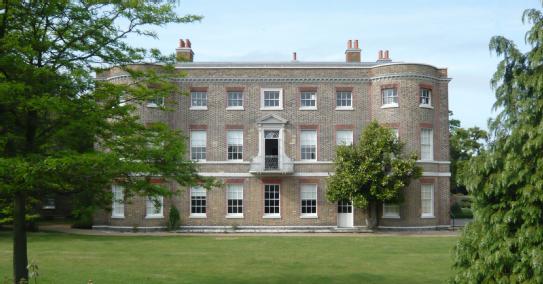
Valentines, the Raymonds and Company Material Culture
by Georgina Green
This case study explores the history of a house (Valentines Mansion, Ilford - shown left), a ship (the Valentine, in its successive reincarnations) and a network of Georgian maritime investors associated with the East India Company (most notably Sir Charles Raymond and his family). More broadly, the case study examines the ways in which profits from commerce conducted at great risk in Asian outposts and Indian Ocean waters came to be reinvested in Britain, refurbishing homes and gardens and reshaping the neighbourhoods in which they were located. Grounded in the eighteenth century, this material history extends to the present day: 'Valentines, the Raymonds and Company Material Culture' illuminates global commerce in the Georgian era, but it also reveals the ways in which the Company's legacy has shaped the built environment of London in the twenty-first century.
The Valentines case study is especially distinctive in its broad-ranging and innovative methodology. Painstaking research in the Company's archive at the British Library and the text-based practices of family and local history underpin this study. But so too does scuba-diving for shipwrecked Company treasure. The illustrations that accompany the case study's text seek to capture the highly diverse methods and sources upon which it is based. Like the broader narrative presented here, the illustrations date from the eighteenth to the twenty-first century, encompassing Georgian prints and entries from ships' log-books at one chronological extreme and dive reports and contemporary art installations at the other.
How to read this case study...
There are three ways to read this case study, depending on your interests:
1. Read through each stage of the case study in turn, beginning with 'Valentines Mansion' and working through to the 'Shipwrecks';
2. Read the menu of sections below, chose a specific section that takes your interest and click straight through to that topic;
3. Scroll down to the bottom of the page and download the entire case study, including scholarly references, in a PDF format.
The first and second pathways offer you an opportunity to engage with the project by providing additional information about the persons, objects and/or houses under study. We have included a series of questions throughout the text that we are particularly keen to answer. If you have relevant material on these or other issues about the Case Study please contact us via the comment boxes on each page or email us at east.india.company@warwick.ac.uk.
The third pathway (the PDF) overlaps substantially with the online version (accessbile by the first and second pathways, noted above). However it differs from the online version in form and substance. It contains additional information about Valentines, the Raymonds and their global context, drawn from both primary and secondary sources. These sources are referenced with full academic footnotes.
Valentines, the Raymonds and Company Material Culture
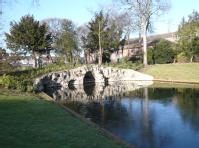
Valentines Mansion from the Seventeenth to the Twenty-First Century
Valentines Mansion was originally built in the late seventeenth century for Mrs Elizabeth Tillotson, widow of John Tillotson, Archbishop of Canterbury. In 2000, Georgina Green began researching the Mansion, which still stands and is now open to the public. This section reveals Valentines' long history and the twists and turns it has taken. To learn more, click here.
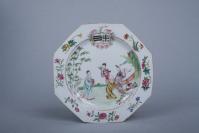
Valentines' East India Company Owners and their Material Objects
Domestic luxury goods manufactured in Britain and Asia featured in Sir Charles Raymond's purchases for Valentines. Through his experience as Captain, Raymond had amassed the connections and knowledge needed to buy desirable objects such as the Chinese porcelain plate (shown left). This section explores those objects and how they were acquired. To learn more, click here.
 The East India Company in Ilford
The East India Company in Ilford
The East India Company relied on dense networks of kinship, patronage and sociability to maintain its monopolistic control over Asian trade. Unsurprisingly when returning to Britain, Company men and women often chose to reside in close proximity to each other. Sir Charles Raymond and his circle were no exception as this section explores. To learn more, click here.
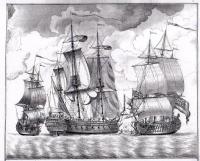
The Valentine: The East India Company's Ships at Trade and War
East Indiamen were ships designed to carry cargo, the container ships of their day. Navigating, investing in and managing the vessels that carried the East India Company's goods from India to Britain was a risky business in the eighteenth century. East Indiamen rarely lasted long and required frequent maintainence and rebuilding as this section explores. To learn more, click here.
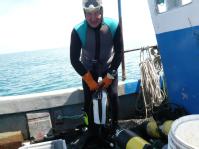
Shipwrecks and the East India Company's 'Immaterial' Material Culture
Shipwreck was a frequent occurence in the history of the East India Company in the Georgian era. In recent years divers have changed our understanding of East India Company cargoes by diving on these wrecks and uncovering artefacts. Nearly 200 years after the Valentine was wrecked, a young Guernsey diver, Richard Keen, decided to try and find the wreck. This section explores what he found. To learn more, click here.
TO DOWNLOAD THE CASE STUDY IN FULL IN PDF FORMAT - CLICK HERE
Valentines Mansion in Ilford is open to the public - to find out more about visiting the Mansion go to their website - Valentines Mansion and Gardens .
.
Acknowledgments
The text, research and images for this case study were primarily authored and sourced by Georgina Green.
Secondary text and some images for the case study were authored and sourced by Margot Finn and Kate Smith.
Copyright @ 2012 University of Warwick
